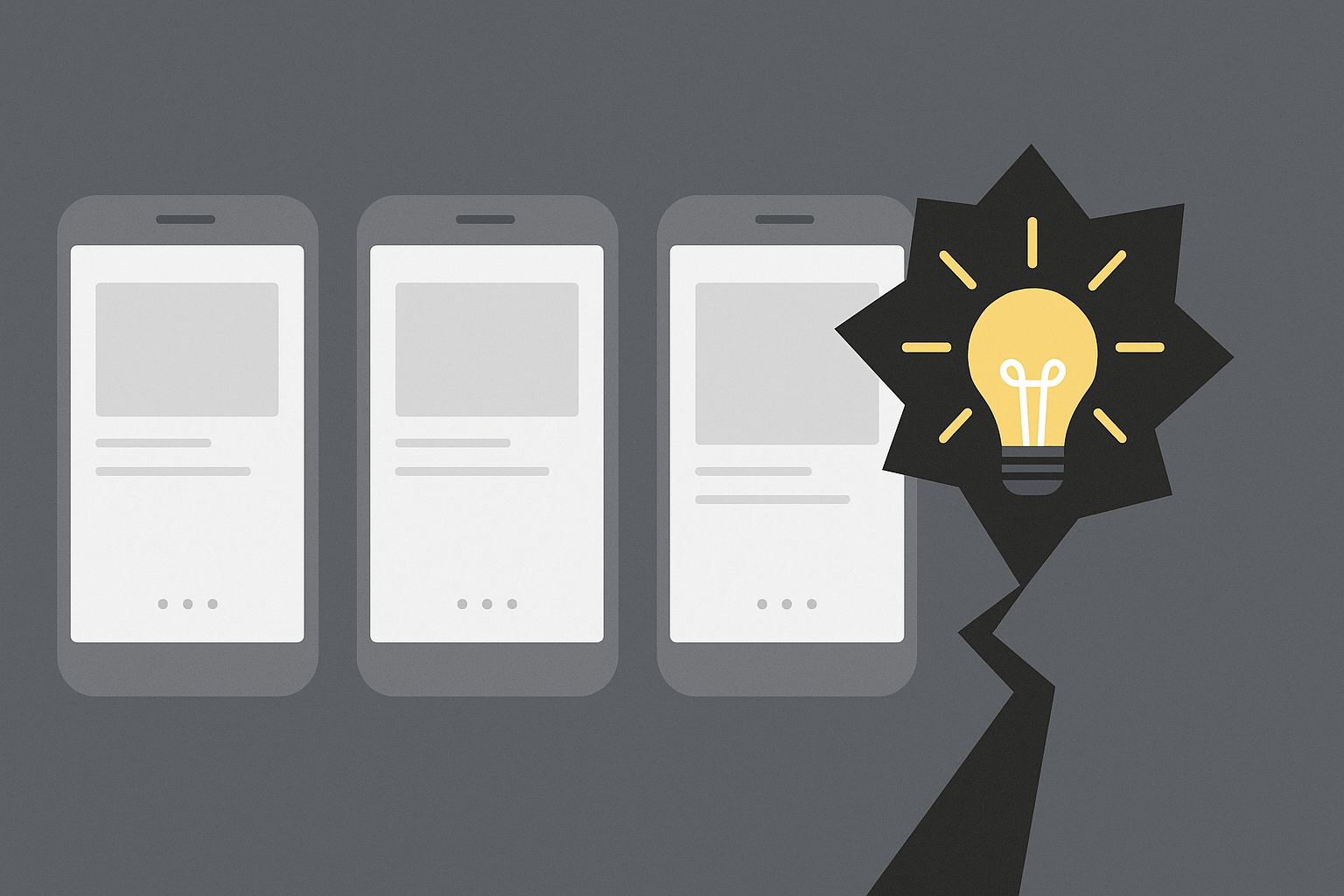Why So Many Apps Feel Boring — And What UX Can Do About It.

Open your phone and scroll through your apps. Banking, shopping, productivity — they all look eerily similar. Functional, yes. But sterile. Predictable. Forgettable. From a UX perspective, this sameness isn’t accidental; it’s a by-product of how we design, build, and measure.
1) Design systems without design thinking
Frameworks like Material Design and Apple’s HIG give us consistency, accessibility, and speed. But they’re toolkits, not templates. Treat them as plug-and-play and you flatten brand character, shipping something that feels like everything else.
2) Fear of friction
“Make it simple, make it familiar” reduces cognitive load — useful, but overdone. Familiarity without personality yields efficient tools that no-one remembers. Usability is necessary; memorability is differentiating.
3) Speed-to-market kills exploration
MVPs and quarterly roadmaps reward safe delivery over creative risk. Exploration, motion language, and micro-interactions are first to be cut. The feature ships; the magic doesn’t.
4) The tyranny of metrics
A/B tests and funnel charts drift teams toward statistically safe choices. Bold ideas get ironed out. Metrics keep us honest, but they can also make us forgettable.
5) Emotion and brand left at the door
Navigation clarity and readable text are table stakes. What’s missing is emotion: moments of joy, motion that conveys brand, copy that sounds like a human. These aren’t “nice-to-haves”; they’re retention levers.
What actually improves retention
- Trust — Reliability, performance, and accessible patterns.
- Identity — A brand voice and visual language users feel aligned with.
- Delight — Small, purposeful moments that reward use without slowing it down.
Most apps only deliver trust. That’s why switching costs feel low — the moment a competitor offers similar features or price, customers move.
A practical UX playbook for distinctiveness
- Define a motion language that is recognisably yours (timing, easing, micro-interactions).
- Codify brand voice in microcopy (empty states, notifications, error messages).
- Introduce one memorable pattern per core flow — a distinctive search, a signature success state.
- Prototype for feeling (not just flow). Test variants that measure recall and preference, not only task time.
- Guard the spark: add a “delight budget” to each release so it can’t be cut in triage.
Final thought
The best apps don’t just work — they make us feel something. In a sea of sterile sameness, feeling is the competitive edge.